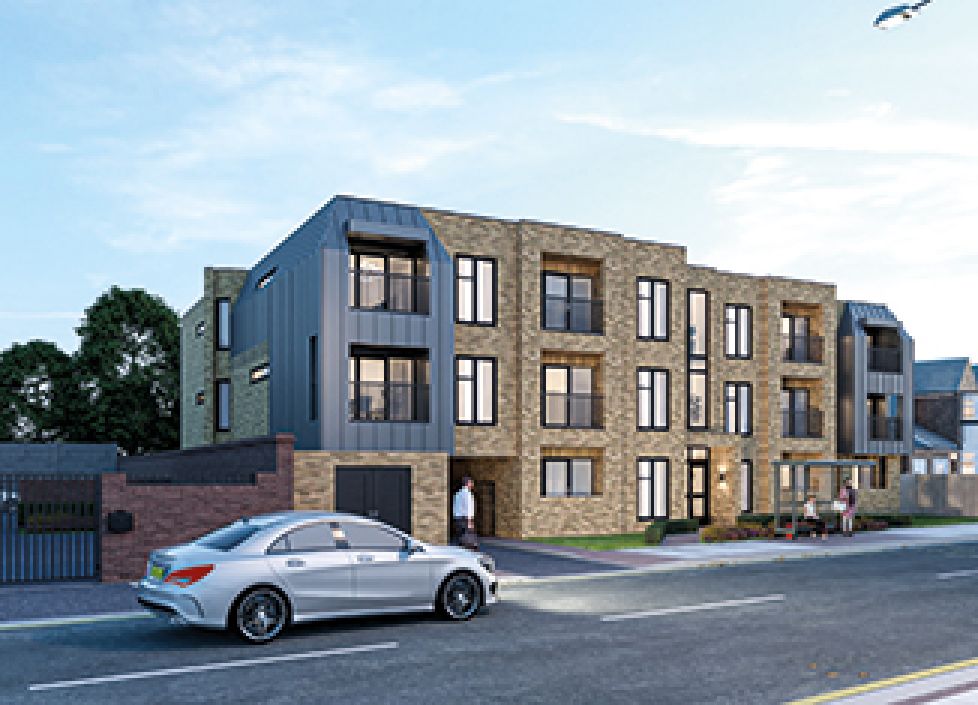The latest (August 2023) Hamptons Monthly Lettings Index has revealed that the average rate of annual rental growth on a newly let property in Great Britain (GB) hit 12.0% in August, the fastest pace since the Hamptons Lettings index began in 2014.
This marked only the fifth month in more than a decade that annual rental growth has run at a double-digit pace, four of which have occurred in the past 12 months. August’s rate of growth surpassed the previous record of 11.5% which was set in May 2022. This growth has left new tenants paying an average of £140 per month more than they were at the same time last year.
The average GB rent crossed the £1,300pm mark for the first-time last month, just 11 months after passing the £1,200pm mark and 37 months after last passing the £1,000pm threshold. This has left rents standing 29% or £296 a month higher than in January 2020 - the eve of the pandemic. Consequently, 68% of the rental growth over the last decade has come in the months since the onset of Covid, with the average rent on a newly let home costing £436 a month more than in August 2013.
However unlikely, should annual rental growth continue running at the current rate of 12.0%, it would take just under four years for the average monthly rent in Great Britain to pass £2,000pm. Yet, if rents rose at the pre-Covid (2016-19) average of 2.0%, it would take 29 years.
Following the average one-bed, which passed the £1,000pm mark four months ago, August saw the average two-bed pass £1,200pm. Rental growth across different property sizes has converged in recent months, with the pace of growth for larger homes catching up with smaller homes.
Rents on newly let properties rose by a record-breaking 13.4% in Scotland in August, the largest increase in more than a decade. This has, for the first time last month, pushed rents in Scotland above the Midlands average (East and West Midlands). Having recorded the strongest growth since January 2020 of 43%, monthly rents stand at £935pm in Scotland compared to an average of £922pm across the Midlands. Rents in Scotland overtook the North of England average (North East, North West and Yorkshire & Humber) as recently as May 2022.
Since the beginning of Covid, the North East followed Scotland with rents up 41% since January 2020 and the North West with 40% growth. At the other end of the scale, rents in Inner London have risen more slowly than anywhere else, up 17% on pre-Covid levels, followed by Wales where rents have risen by 19%.
However, over the last 12 months, annual rental growth continues to be led by the capital, with London rents up 17.1% year-on-year. This is only slightly less than the 17.2% record, which was set back in April. Over the last year annual growth has been stronger in the capital than elsewhere as rents fell more during the pandemic and continue to catch up.
Consequently, rents in London have been rising at a double-digit pace in 16 of the last 18 months, costing the average tenant an extra £5,508 each year compared to March 2022. Since January 2020, growth has been led by Outer London where rents stand 30% higher than pre-Covid levels, compared to a 17% increase in Inner London.
There are signs, however, that some of the upward pressure on rental growth may ease. The number of rental homes on the market carried on rising during August, up 30% on last year’s record low, a sign that homes are sitting on the market slightly longer than last year. But the number of rental homes available remains 39% below 2019 levels despite a similar number of tenants looking to move. And this long-term decline in rental stock will continue to underpin future rental growth, according to the report.
Commenting, Aneisha Beveridge, head of research at Hamptons, said: “Each passing month has ushered in a new rental market record. Rents have risen more in the last 12 months than they did between 2015 and 2019.
“While the current pace of rental growth is unsustainable long term, many mortgaged landlords are being squeezed just as tightly as tenants. Higher rents are only going some way towards helping mortgaged landlords’ balance their books, rather than boosting their profit. This is one of the reasons we haven’t seen large numbers of new landlord’s come into the market.
“The fallout from higher mortgage rates continues to buffer the rental market. Higher interest rates have encouraged some leveraged landlords to conserve cash and invest beyond bricks and mortar. With the Bank of England raising rates to encourage debt repayment instead of additional borrowing, the 30,000+ fall in the number of outstanding UK buy-to-let mortgages since November shows landlords are playing ball. However, it’s a mixed blessing for tenants. With most mortgages repaid by the sale of the home, renters are being short-changed. And this is adding fuel to the rental market.”




















